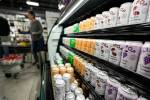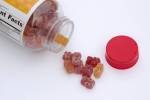Vitamin D to the Rescue
With all the good news coming out in recent years about vitamin D, you’d think that this essential nutrient does everything short of improve your golf game and give you minty fresh breath.
Arthritis, asthma, colon cancer, coronary artery disease, diabetes, depression, hypertension, rheumatoid arthritis, multiple sclerosis, dementia, gum disease — you name it, vitamin D plays a role in preventing, treating or delaying it.
That’s what the studies suggest, at any rate. The truth is more elusive.
One thing we know for sure about vitamin D is that it promotes bone health by helping the body absorb calcium. After that, things get murky.
Vitamin D is a hormone that comes from three sources: the sun, food and dietary supplements.
Our bodies make vitamin D when our uncovered skin is exposed to the sun. That’s the way that most of us meet at least some of our needs for vitamin D — and the source of the nutrient’s nickname, the “sunshine vitamin.”
Ten to 15 minutes under a midday sun, two or three times a week, is sufficient for most people, said Damon McCune, a dietitian and director of the didactic program in nutrition and dietetics at UNLV.
Getting vitamin D from food is a little trickier. Very few foods in nature contain it. Fatty fish such as salmon, tuna and mackerel contain good amounts. Beef liver, cheese and egg yolks contain smaller amounts.
This dearth of food sources is why milk has been fortified with vitamin D since the 1930s. Vitamin D is added to other foods such as orange juice, yogurt and ready-to-eat cereals.
We can also get vitamin D from dietary supplements, and 37 percent of the U.S. population does just that, according to a 2005-2006 report by the National Health and Nutrition Examination Survey.
But do we really need to boost our vitamin D intake?
If you’re in a group of people at risk of vitamin D inadequacy, it might be a good idea.
Vitamin D levels in blood are measured in nanograms per milliliter (ng/mL). The National Institutes of Health Office of Dietary Supplements says that 20 ng/mL or higher is sufficient for most people. A level between 12 ng/mL and less-than 20 ng/mL is considered inadequate, and below 12 ng/mL indicates deficiency.
While there is no firm agreement on where most Americans fall on this spectrum — it’s a “complex and controversial” question, according to an article in the American Journal of Clinical Nutrition — many experts warn that we’re simply not getting enough vitamin D.
The National Health and Nutrition Examination Survey, for example, concluded that more than six out of 10 white Americans and more than nine out of 10 black Americans suffer from vitamin D insufficiency.
While we may not know whether those numbers are accurate, we know for sure which populations are at risk.
Older folks are particularly susceptible because they don’t get outside as much and their bodies don’t synthesize vitamin D as efficiently as when they were young.
Breast-fed infants are another big group. Human milk is a poor source of vitamin D, which is why the National Institutes of Health recommends giving breast-fed infants a vitamin D supplement of 400 international units per day (IU/day).
People with limited sun exposure — the homebound and hospitalized, for example — are also at risk. Dietitian Peter DiPrete said vitamin D supplementation is common among the cancer and burn patients he works with at University Medical Center.
African-Americans can be at risk because darker skin produces less vitamin D than lighter skin. People with inflammatory bowel disease and those who have undergone gastric bypass surgery also may be deficient, as may vegans and those with milk allergies and lactose intolerance.
The Institute of Medicine, which advises the U.S. government on nutrient intakes, says that from age 1 to 70, people should get 600 IU/day of vitamin D. Starting at age 71, that amount should go up to 800 IU/day.
The only way to find out if you’re getting enough is by taking a 25 hydroxy vitamin D blood test.
It’s not a routine test — the medical evidence doesn’t support testing everybody — so you’ll have to request it from your doctor.
Kate Martin, a physician and vice chief of staff at University Medical Center, said she orders the test a few times a month for patients with certain medical issues such as bone-health problems, celiac disease or a history of weight-loss surgery. She might also order it for those who take seizure medications.
What if you don’t know your vitamin D status yet are generally healthy with no risk factors? Should you take a supplement just in case?
“If you don’t know your status, I wouldn’t recommend it, because there’s a potential for toxicity,” McCune said.
In that respect, McCune comes out on the side of the Institute of Medicine, which cautions that vitamin D deficiency in North America may be overestimated, and that people who take high doses of supplements risk adverse effects such as kidney and tissue damage.
Many people jumped on the vitamin D bandwagon in response to a flurry of clinical studies in recent years linking low blood levels of the nutrient with a host of maladies — dementia, prostate cancer, heart disease, schizophrenia, erectile dysfunction — the list goes on.
In 2010, a committee of the Institute of Medicine conducted what it termed an exhaustive review of D-linked health outcomes and concluded that the evidence supported vitamin D’s role in good bone health but not in other conditions and diseases. Moreover, too much vitamin D can be harmful, the study concluded.
Why the confusion? The UC Berkeley Wellness Letter explains that many of the links between vitamin D and health outcomes were based on observational studies that follow groups of people over time.
Those types of studies may identify associations but don’t prove cause and effect, noted Miriam B. Een, assistant professor of nutrition at the University of Nevada School of Medicine.
“When they find these connections, it’s not necessarily that vitamin D is causing the condition, it’s that vitamin D is a kind of marker, so it may coexist with” one particular health condition or another, Een said.
“Supplementing with vitamin D may not necessarily help if you’re not addressing the underlying cause of the low vitamin D level,” she added.
So, even though vitamin D won’t do much for your golf game, it’s still important to make sure you’re getting enough.
For parents like Een, who is raising fair-skinned children in Las Vegas’s harsh desert sun, that poses its own set of problems. Sunscreen can affect vitamin D synthesis, and “I’m slathering sunscreen on them all the time and I use lotion for my own face,” she said.
People who are concerned about their vitamin D levels because they protect themselves from the sun may want to take a supplement of about 1,000 IU/day, Een said.




























